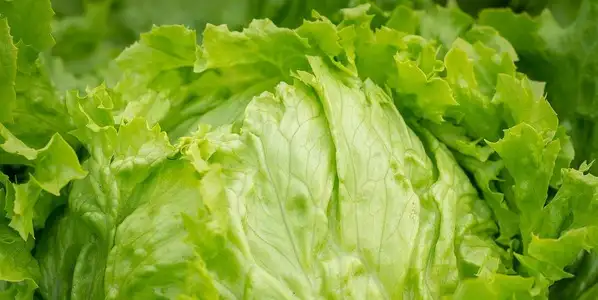
Iceberg lettuce is a common but controversial salad. Although it is a staple in many classic salads and sandwiches, it has also drawn criticism from nutrition-...
Read more


|
Nutrient |
Per 100 g |
|---|---|
|
Calorific value |
150 kJ |
|
Energy |
33 kcal |
|
Carbohydrates |
5 g |
|
Protein |
0 g |
|
Fat |
0 g |
The food Strawberries (fresh) is composed of the following macronutrients.
Strawberries have the following health-promoting properties:
Strawberries are a delicious and healthy fruit that is popular for its sweet taste and numerous health benefits. They belong to the rose family and are one of the most widely grown berry fruits in the world. They are available from May to September, depending on the growing area and climate.
Strawberries have a bright red color, a slightly tart-sweet flavor and a compact, soft texture. They can be eaten raw or made into a variety of foods such as jams, marmalades, desserts, juices and wine.
What is the best way to store strawberries?
Strawberries should be stored as fresh as possible and without signs of discoloration or moisture to maximize their quality and shelf life. The following steps can help ensure strawberries are stored properly: store strawberries in the refrigerator at a temperature of about 0 to 4 degrees Celsius.
What is the shelf life of strawberries?
Strawberries are delicate fruits with a short shelf life. If they are stored fresh and undamaged, they can usually be kept in the refrigerator for 2 to 3 days. However, it is better to consume them as soon as possible to get the best quality and taste. Strawberries can also be frozen to extend their shelf life. However, they should be frozen within 24 hours of harvest or purchase to preserve nutrients and flavor. Frozen strawberries can be kept for up to one year.
What are the varieties of strawberries?
There are many varieties of strawberries that vary in size, flavor, texture and growing season. Some of the best known and most commonly grown varieties are Juna: an early ripening variety widely grown in the US and Europe. It has large, sweet and aromatic berries. Elsanta: Another early-maturing variety grown in Europe and North America. The berries are large, sweet and juicy. Chandler: A late maturing variety grown in California and other parts of the US. Berries are large, sweet and aromatic. Camarosa: Also a late-ripening variety grown in California and other parts of the US. Berries are large, sweet and juicy. Alba: An old variety grown in Europe. The berries are smaller, but very sweet and aromatic. Sabine: A late maturing variety grown in Europe. The berries are large, sweet and juicy. Darselect: A late ripening variety grown in Europe. The berries are large, sweet and juicy. Senga Sengana: Early maturing variety grown in Europe. The berries are large, sweet and juicy.
What are the differences between wild strawberries and cultivated strawberries?
Wild strawberries and cultivated strawberries are two different types of strawberries. Wild strawberries, also called wild strawberries or wild strawberries, grow naturally in nature and are smaller and less sweet than cultivated strawberries. They also have a shorter growing season and lower yield. However, they often have a more intense and complex flavor than cultivated strawberries. Cultivated strawberries, also called garden or greenhouse strawberries, are grown and raised by humans. They are larger, sweeter and higher yielding than wild strawberries. They also have a longer growing season and are easier to find and buy than wild strawberries. Both types of strawberries have their own benefits and properties and can be used in a variety of applications and recipes. However, cultivated strawberries are the first choice for retail and consumer markets because they are available in larger quantities and on a regular basis.
I love this app! The food is super varied and filling (and soo delicious!). With one purchase I have the ingredients for a whole week together, thanks to the shopping list. The ingredients are also readily available and not really expensive.
Nicole — App User
The first app in the field of nutrition tips that really convinces me. Updates get minor issues out of the way and new features are added all the time. Top!
Unknown user — App User
ave already tried many nutrition apps but here it is really great and you save a lot of time because you do not have to enter all the meals yourself! 👍👏
Mareen — App User
I don't usually rate apps but this one has to be rated.... I have never had such a great app just fits everything.... The nutrition plans are just absolutely awesome just everything is awesome many many thanks
Mareen — App User
This app is an excellent support for healthy eating even with little time and effort! Super recipes are also included. Highly recommended!
Lennert — App User